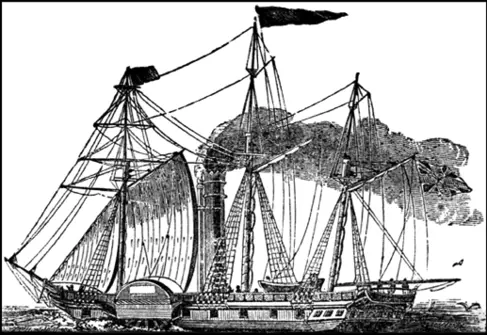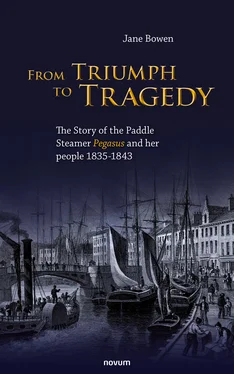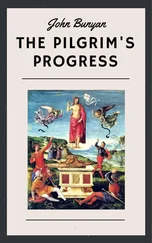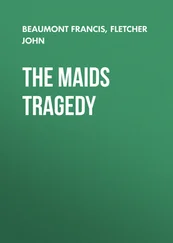Contents
Imprint 3 Imprint All rights of distribution, also through movies, radio and television, photomechanical reproduction, sound carrier, electronic medium and reprinting in excerpts are reserved. © 2021 novum publishing ISBN print edition: 978-3-99107-708-4 ISBN e-book: 978-3-99107-709-1 Editor: Hugo Chandler, BA Cover images: Ekaterina Gerasimova, Grian12, Rodjulian | Dreamstime.com Cover design, layout & typesetting: novum publishing Images: See list of illustrations and maps on page 10–12 www.novum-publishing.co.uk
Dedication 4 Dedication For Janet, who has shared the search for the Pegasus, and without whose encouragement, and research and photographic skills, this book would never have been completed. Paddle Steamer, believed to be the Pegasus, from ‘A Narrative of the Life of Charles Bailey’
Foreword 5 Foreword The story of the steam ship Pegasus is probably not one well known to many people. It was built in the 1830s for the coastal sea route from Leith to Hull, at a time when steamships were seen as an improvement on the speed and reliability of sailing ships. For many it was preferable to a long uncomfortable journey by coach, assuming it wasn’t a stormy sea! I first became aware of the ship and its sinking off Holy Island in the 1990s, when a couple of people visited the Berwick Record Office looking for information. I knew the name of the ship but not the story behind it and could only provide access to the local newspaper, Berwick Advertiser. Over the years, I have picked up more bits of information-entries in the Bamburgh and Holy Island burial registers; the badly worn gravestone dedicated to Field Flowers in Holy Island Churchyard and the programme on comedian, Sarah Millican in ‘Who Do You Think You Are’, where it was revealed that one of her ancestors had worked on the wreck as a diver. However, these were only bits and pieces, only part of the story. When Jane asked me to read her book, I was very keen to do this as I wanted to know what she had found out. As Jane is an avid and meticulous researcher, I knew she would leave no nook or cranny unturned in her quest for information. The book hasn’t disappointed and I have been amazed about what is revealed not only about the boat, the company who ran it and its sad fate on what was really a clear night but in very dangerous waters. However, this is only half the picture, as what really brings this book to life is the previously untold stories of those on board, most of whom were lost and many whose bodies were never recovered. I was fascinated to read about their diverse backgrounds and this book is really a testament and legacy for them and what local and family history is all about – ordinary people and places and how their lives become intertwined with events which shaped the future of shipping. Who would have thought that a chance discovery of some information in an archive would lead to such detailed and varied research on a little-known disaster off the Northumberland coast, which deserves to be properly recorded and remembered, a fitting memorial to those involved with it. Linda Bankier, Berwick Archivist
Preface 7 Preface My interest in the Pegasus began when I found, in the Northumberland Archives, a collection of proofs of ‘Reward’ notices, looking for information about passengers lost following the sinking of the Pegasus in July 1843. The number of different notices suggested a serious disaster, but I had never heard of it. I was curious. A Google search produced accounts of the disaster, in its day the worst merchant marine disaster in British waters. In the search, I also found that the company records were held in the Glasgow University Archives. From the information there, and in the British Newspaper Archives, a much fuller picture of the ship and its activities began to emerge. Built in 1835, specifically for the Leith/Hull route, at the time the Pegasus was at the cutting edge of ship design – and a forerunner of John Masefield’s ‘Dirty British coaster’. In the years that followed, the weekly passenger and goods service she provided was a key link in the industrialisation of Scotland before railway communication was fully established. In each country, she created markets for goods produced by other countries. At a time when political revolutions were still current in Europe, the service contributed to the security of the United Kingdom as a whole, allowing troops to be moved efficiently to garrisons across the country. The Pegasus also had a hand in the entertainments industry of the day. Racehorses, theatre companies and menageries all sailed on her, making travelling shows accessible to a much wider audience. Her unexpected wreck, on a clear summer’s night in 1843, shocked the nation, and left grieving families across Britain, from Inverness to London, and Wales to Lincolnshire. Even then, she was at the forefront of salvage activity, with some of the first deep sea helmeted divers working on her to retrieve bodies and goods. From the disaster, and the enquiries which followed, came the beginnings of better shipping regulation. This is the story I have tried to tell – I hope you will find it as fascinating as I have.
Acknowledgements 9 Acknowledgements This book would not have been possible without the help, encouragement and advice of those who generously shared their own work and research with me. Particular thanks are due to: Judith Fawcett Armstrong; Linda Bankier (Berwick-upon-Tweed Record Office), Ann Bevan (The Historical Diving Society), John Bevan (Holy Island), Michael Finchen (The Quartermaster’s Store), Alexander Findlater, the late Ron French, Norman Frisby and Graham Knox (St. Chad’s Church, Rochdale), Jill Groves, Louise Harrison (London Metropolitan Archives), Kathryn Jones (Lincolnshire Archives), Eva La Pensée, Ervine Long, Bill Longbone, June Slee, Philip Somervail, Wendy and Alan Urwin, and Lisa Waters (Bamburgh Castle Archives).
List of Illustrations and Maps 10
Part 1 13
Chapter 1 15
Chapter 2 20
Chapter 3 27
Chapter 4 36
Chapter 5 42
Chapter 6 48
Chapter 7 58
Chapter 8 67
Chapter 9 76
Chapter 10 85
Chapter 11 94
Part 2 105
Chapter 12 106
Chapter 13 114
Chapter 14 123
Chapter 15 132
Chapter 16 144
Chapter 17 158
Chapter 18 168
APPENDIX 172
The Crew 173
Civilian Passengers 182
Military Passengers 210
Bibliography 214
Index 218
Imprint
All rights of distribution, also through movies, radio and television, photomechanical reproduction, sound carrier, electronic medium and reprinting in excerpts are reserved.
© 2021 novum publishing
ISBN print edition: 978-3-99107-708-4
ISBN e-book: 978-3-99107-709-1
Editor: Hugo Chandler, BA
Cover images: Ekaterina Gerasimova, Grian12, Rodjulian | Dreamstime.com
Cover design, layout & typesetting: novum publishing
Images: See list of illustrations and maps on page 10–12
www.novum-publishing.co.uk
Dedication
For Janet, who has shared
the search for the Pegasus,
and without whose encouragement,
and research and photographic skills,
this book would never have
been completed.

Paddle Steamer, believed to be the Pegasus, from ‘A Narrative of the Life of Charles Bailey’
Foreword
The story of the steam ship Pegasus is probably not one well known to many people. It was built in the 1830s for the coastal sea route from Leith to Hull, at a time when steamships were seen as an improvement on the speed and reliability of sailing ships. For many it was preferable to a long uncomfortable journey by coach, assuming it wasn’t a stormy sea!
Читать дальше













